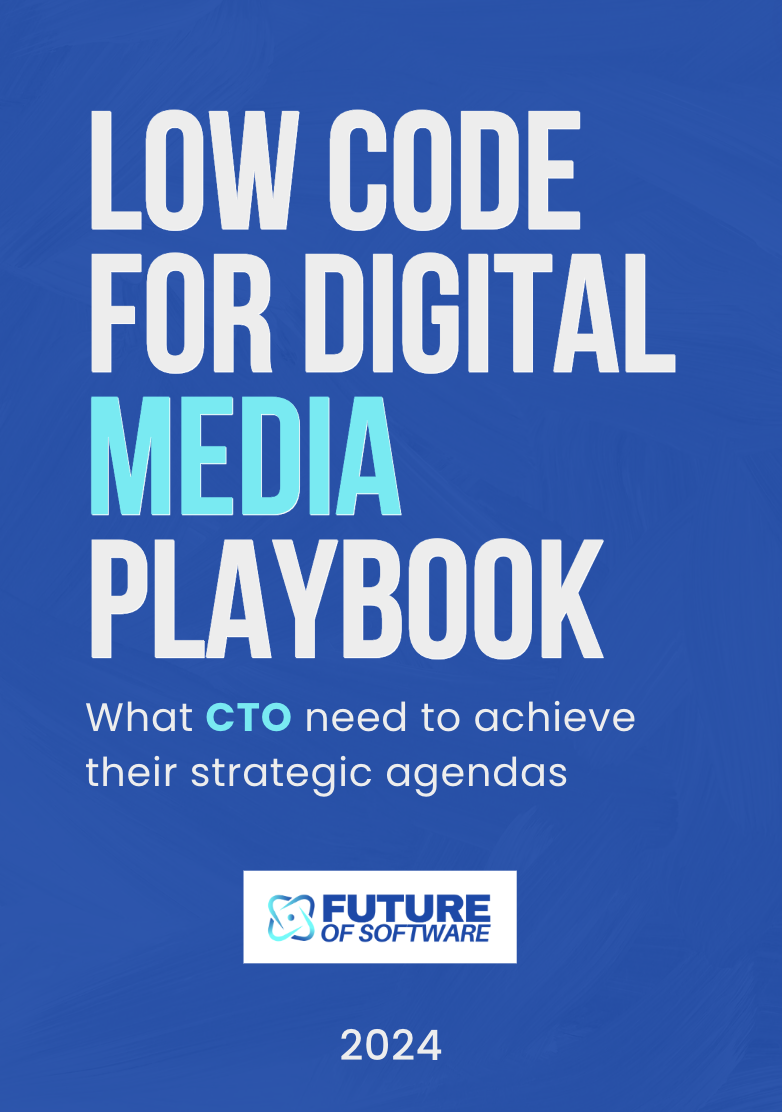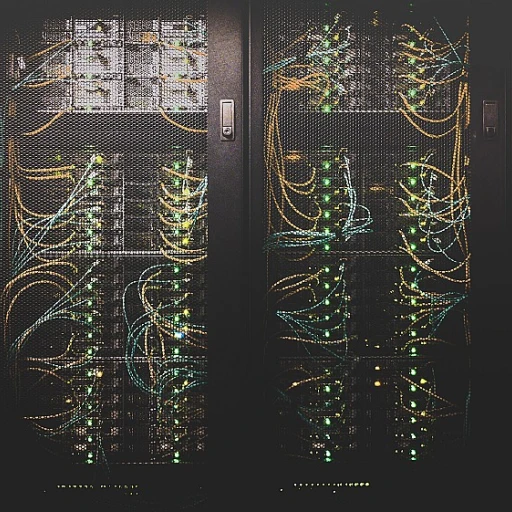
Understanding Predictive Analytics in Software
Decoding the Essence of Predictive Analytics
Predictive analytics is reshaping the software development landscape by leveraging data to forecast future outcomes. This approach utilizes a combination of data mining, machine learning, and statistical algorithms to identify patterns and predict future trends. In the world of business, predictive analytics is becoming a cornerstone for decision-making processes, offering insights that drive strategic planning and operational efficiency.
At its core, predictive analytics involves analyzing historical data to predict future events. This process is powered by advanced technologies like machine learning and deep learning, which enable systems to learn from data and improve over time. As the industry continues to evolve, the integration of big data and data science is further enhancing the capabilities of predictive analytics, making it an indispensable tool for businesses across various sectors.
The Role of Data in Predictive Analytics
Data is the lifeblood of predictive analytics. The quality and quantity of data directly impact the accuracy of predictions. In recent years, the proliferation of data from diverse sources has fueled the growth of predictive analytics. From healthcare to marketing analytics, industries are harnessing data to gain a competitive edge. Conferences like the Predictive Analytics World (PAW) bring together data scientists and industry experts to share insights and advancements in this field.
As we delve deeper into the applications of predictive analytics, it becomes evident that its potential is vast. Whether it's improving marketing strategies or enhancing healthcare outcomes, the ability to predict future trends is invaluable. The upcoming sections will explore these applications in greater detail, highlighting the transformative impact of predictive analytics in various domains.
Key Applications of Predictive Analytics in Software
Transforming Industries with Predictive Analytics
Predictive analytics is reshaping the software development landscape by offering powerful tools that transform raw data into actionable insights. This transformation is evident across various sectors, where predictive analytics is not just a buzzword but a game-changer. Let's delve into some key applications where predictive analytics is making a significant impact.
Enhancing Marketing Strategies
In the marketing world, predictive analytics helps businesses anticipate customer behavior, optimize campaigns, and improve customer engagement. By analyzing historical data, companies can forecast trends and tailor their marketing strategies to meet consumer demands effectively. This approach not only boosts marketing efficiency but also enhances customer satisfaction.
Revolutionizing Healthcare
In the healthcare industry, predictive analytics is used to improve patient outcomes by predicting disease outbreaks, personalizing treatment plans, and optimizing resource allocation. The integration of big data and machine learning in healthcare allows for early detection of diseases, which can save lives and reduce costs.
Driving Business Decisions
Businesses across North America and beyond are leveraging predictive analytics to make informed decisions. By analyzing data patterns, companies can predict future trends, manage risks, and enhance operational efficiency. This data-driven approach is crucial for staying competitive in today's fast-paced business environment.
Innovative Strategies for Skill Development
Predictive analytics is also playing a pivotal role in skill development within the software industry. By identifying skill gaps and predicting future skill requirements, companies can tailor their training programs to meet the evolving demands of the industry. For more insights on how predictive analytics is enhancing skill development, check out innovative strategies for skill development in software.
Insights from Conferences and Events
Conferences such as the Predictive Analytics World (PAW) provide a platform for industry leaders to share insights and discuss the latest trends in predictive analytics. These events are crucial for staying updated with the best practices and innovations in the field. Attending such conferences can offer valuable insights into the future of predictive analytics and its applications across various sectors.
Challenges in Implementing Predictive Analytics
Overcoming Barriers in Predictive Analytics Implementation
Implementing predictive analytics in software development is not without its challenges. As organizations strive to harness the power of data, they often encounter several hurdles that can impede progress. Understanding these challenges is crucial for businesses looking to leverage predictive analytics effectively.
One of the primary challenges is the sheer volume of big data that needs to be processed. With the explosion of data from various sources, companies must invest in robust data management systems to handle and analyze this information efficiently. This requires not only technological investment but also skilled data scientists who can navigate the complexities of data mining and machine learning.
Another significant challenge is the integration of predictive analytics into existing systems. Many organizations operate on legacy systems that may not be compatible with modern analytics tools. This can lead to costly and time-consuming upgrades or replacements. Moreover, aligning predictive analytics with business objectives requires a clear understanding of the organization's goals and the ability to translate data insights into actionable strategies.
Data privacy and security concerns also pose a challenge. As predictive analytics relies heavily on data, ensuring the protection of sensitive information is paramount. Organizations must comply with regulations and implement stringent security measures to safeguard data, which can be a daunting task given the evolving landscape of cyber threats.
Finally, there is the challenge of fostering a culture of data-driven decision-making. Many businesses still rely on traditional decision-making processes, and shifting to a predictive analytics approach requires a change in mindset. This involves educating stakeholders about the benefits of predictive analytics and demonstrating its value through case studies and success stories.
Despite these challenges, the potential benefits of predictive analytics in software development are immense. By addressing these barriers, organizations can unlock new opportunities and drive innovation in the industry.
Innovations Driving Predictive Analytics Forward
Technological Advancements Pushing Boundaries
Predictive analytics in software development is experiencing a surge of innovation, driven by advancements in technology. Machine learning and deep learning are at the forefront, enabling more accurate predictive models. These technologies allow data scientists to process vast amounts of data, uncovering insights that were previously unattainable. The integration of big data analytics further enhances the ability to predict trends and outcomes, making it a cornerstone of modern software development.
Industry-Specific Innovations
Across various sectors, predictive analytics is being tailored to meet specific industry needs. In healthcare, for instance, predictive models are being developed to anticipate patient outcomes and optimize treatment plans. The marketing industry leverages predictive analytics to enhance customer engagement and personalize marketing strategies. These industry-specific applications are showcased in numerous conferences worldwide, such as the PAW Business and PAW Climate events, where experts share the latest breakthroughs and case studies.
Collaborative Efforts and Conferences
The collaborative nature of the analytics world is evident in the numerous conferences and events held globally. These gatherings, such as the Learning Week Europe and the Analytics World Conference, bring together leading speakers and data scientists to discuss the future of predictive analytics. These events provide a platform for sharing best practices and innovative strategies, fostering a community of learning and growth.
Continuous Learning and Adaptation
As the field of predictive analytics evolves, continuous learning and adaptation are crucial. Data mining and machine learning techniques are constantly being refined, requiring professionals to stay updated with the latest trends and technologies. This ongoing learning process is essential for maintaining a competitive edge in the fast-paced world of software development.
Case Studies: Success Stories in Predictive Analytics
Real-World Success Stories in Predictive Analytics
Predictive analytics has been making waves across various industries, demonstrating its potential to transform how businesses operate. Let's delve into some compelling case studies that highlight the successful application of predictive analytics in software development.
Healthcare: Enhancing Patient Outcomes
In the healthcare sector, predictive analytics has been instrumental in improving patient outcomes. By leveraging big data and machine learning, healthcare providers can predict patient readmissions and tailor personalized treatment plans. This not only enhances patient care but also optimizes resource allocation, reducing costs significantly.
Marketing: Driving Customer Engagement
Marketing analytics has seen a revolution with predictive analytics. Businesses are now able to analyze consumer behavior patterns and predict future buying trends. This enables companies to craft targeted marketing strategies, enhancing customer engagement and boosting sales. The insights gained from data mining and deep learning have proven invaluable in understanding consumer preferences.
Finance: Mitigating Risks
The finance industry has embraced predictive analytics to mitigate risks and enhance decision-making processes. By analyzing historical data, financial institutions can predict market trends and identify potential risks. This proactive approach helps in safeguarding investments and ensuring financial stability.
Manufacturing: Optimizing Operations
In manufacturing, predictive analytics is used to optimize operations and improve efficiency. By analyzing machine data, manufacturers can predict equipment failures and schedule maintenance proactively. This reduces downtime and increases productivity, leading to significant cost savings.
Conclusion
These case studies underscore the transformative power of predictive analytics in software development. As industries continue to harness the potential of big data and machine learning, the future of predictive analytics looks promising, with endless possibilities for innovation and growth.
The Future Landscape of Predictive Analytics in Software
The Evolving Landscape of Predictive Analytics
The future of predictive analytics in software development is poised to be transformative, with rapid advancements in technology and methodology. As we delve deeper into the world of predictive analytics, it's clear that the integration of machine learning and deep learning is reshaping how data is utilized across various sectors.
Integration Across Industries
Predictive analytics is not confined to a single industry. From healthcare to marketing, and even climate studies, the application of predictive models is expanding. The insights gained from big data are driving more informed decision-making processes, enhancing efficiency and effectiveness. For instance, in healthcare, predictive analytics can forecast patient outcomes, while in marketing, it can optimize customer engagement strategies.
Technological Innovations
Technological innovations are at the forefront of this evolution. The rise of data science and data mining techniques is enabling more precise predictive models. Conferences like PAW Business and PAW Climate are platforms where data scientists and industry leaders gather to share the latest advancements and insights. These events are crucial for staying updated on the best practices and emerging trends in predictive analytics.
Challenges and Opportunities
While the potential is immense, challenges remain. Implementing predictive analytics requires overcoming hurdles such as data privacy concerns and the need for skilled professionals. However, these challenges also present opportunities for innovation and growth. As more businesses recognize the value of predictive analytics, the demand for expertise in this field will continue to rise.
Looking Ahead
As we look to the future, the role of predictive analytics in software development will only grow more significant. The continuous evolution of machine learning and deep learning technologies will further enhance the predictive capabilities of software, leading to more accurate and actionable predictive scores. The analytics world is on the cusp of a new era, where the integration of advanced technologies will redefine the possibilities of what predictive analytics can achieve.





-large-teaser.webp)









